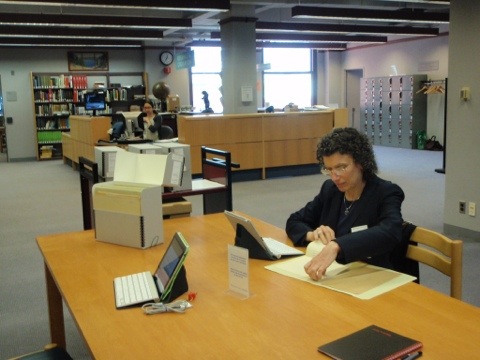We are finishing up our preliminary work in the AMNH archives today, overwhelmed at the volume of material, but with a much better idea of what we have ahead of us. In the coming weeks we’ll be posting commentary about some of the treasures we found as we process all this information.
As you might expect of a large institution, the volume of correspondence the expedition produced is tremendous. In archival terms this translates into 11 linear feet of file boxes, each filled with folders of papers. For those who have grown up with electronic records and communication, and even those for whom photocopiers seem to have been around forever, the labor these records represent is staggering.
What would be a quick email or text exchange today, then generated a series of formal letters, or in urgent cases, telegrams. Letters are mostly typed with one or more carbon copies, the original “cc’s.” Even handwritten correspondence is sometimes accompanied by a typed transcript, a godsend when the original author’s scrawl is difficult to decipher. Clearly many typists spent many hours at this work. Questions that could be answered with a quick Google search today required letters sent, and replied to; brochures for equipment requested and sent; and detailed estimates of the costs of everything from photographic film to hardware sent, approved, and acted on.
The files include correspondence on all aspects of the expedition, from MacMillan’s first formal proposal in 1911 to completion of reports in the 1920s. If it was written down, it was saved and filed, a detailed window onto the institutional culture and the workings of a major scientific expedition in the first quarter of the twentieth century. At this point we have done a broad survey of the papers, in preparation for more focused research later. Still, even as we quickly paged through 1000s of documents significant tidbits of information jumped out, potential leads for further research, and answers to niggling questions. Stay tuned for updates soon!

